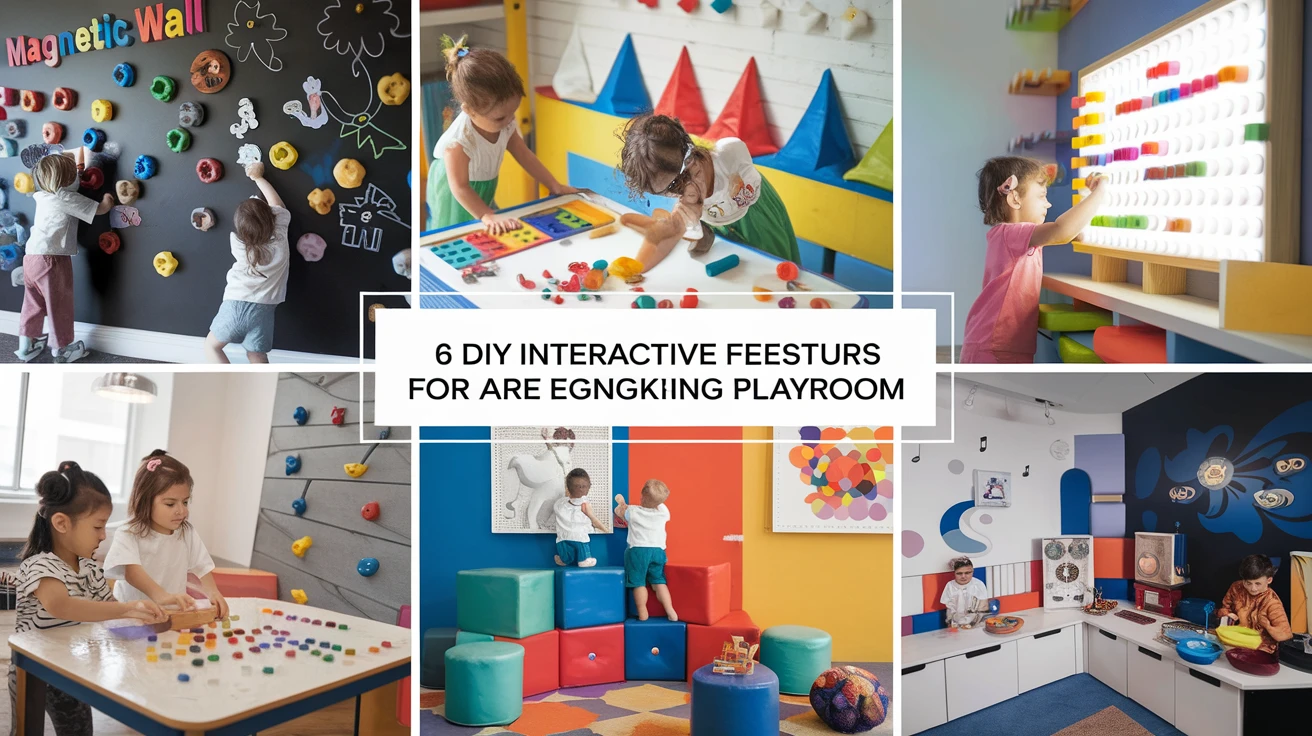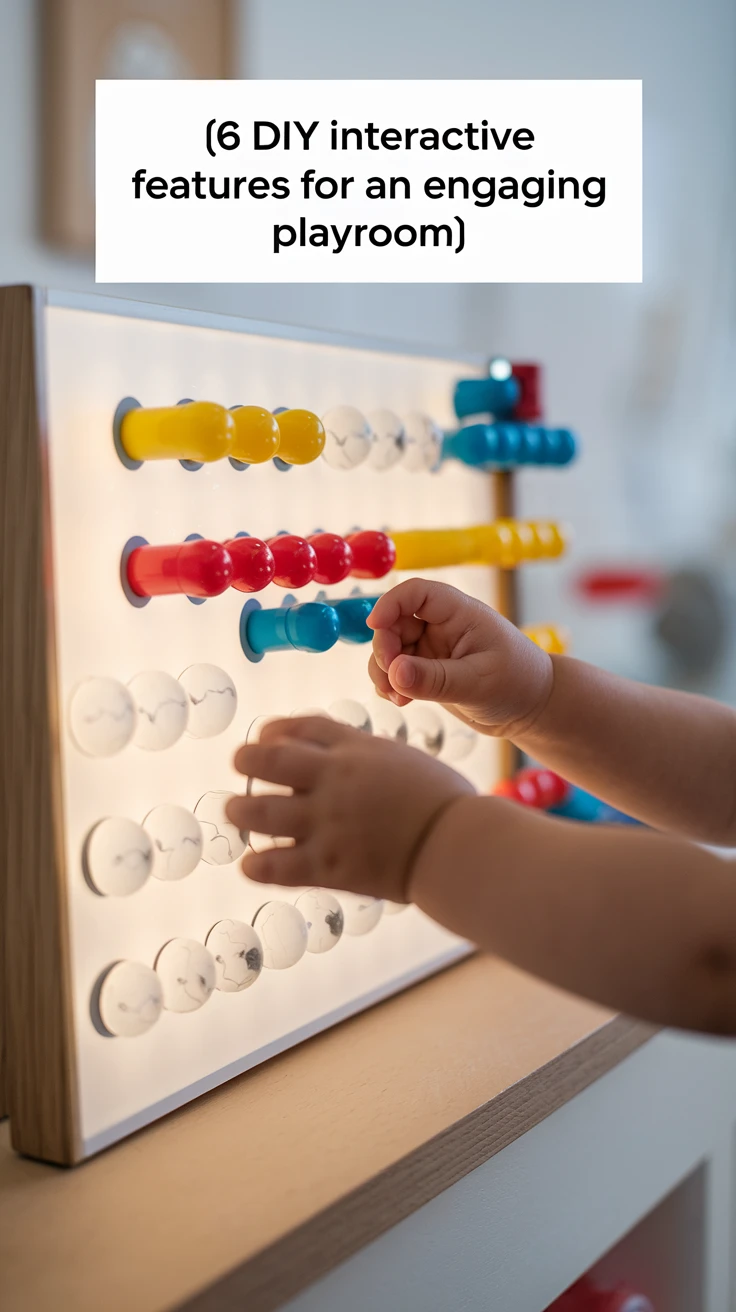
Creating an engaging playroom for children isn’t just about filling a room with toys. It’s about crafting an environment where imagination can run wild and creativity can flourish. If you’re passionate about providing an enriching space for your children, consider integrating interactive playroom installations. These installations can transform a simple room into a dynamic play zone. And the best part? You can do it yourself! Let’s dive into six DIY interactive features that will inspire and captivate your little ones.
1. Magnetic Wall Art
One of the simplest yet most effective interactive features you can add to a playroom is a magnetic wall. Not only does it encourage creativity, but it also helps with motor skill development. I once made the mistake of using regular paint instead of magnetic paint, and let’s just say, magnets don’t stick to regular walls!
How to Create a Magnetic Wall
- Choose a wall or a section of it.
- Purchase magnetic primer from your local hardware store.
- Apply 2-3 coats of magnetic primer, allowing each coat to dry.
- Cover with chalkboard paint for a dual-purpose surface.
Not only can your kids stick magnets, but they can also draw and erase to their heart’s content. It’s a win-win!
2. Sensory Play Table
Children learn best when all their senses are engaged. A sensory play table offers endless opportunities for tactile exploration. I remember when I first introduced a sensory table to my kids; the look of wonder on their faces was priceless!
Essentials for a Sensory Play Table
| Materials | Description |
|---|---|
| Rice or Sand | Provides a base for digging and pouring. |
| Water Beads | Colorful and squishy, these add a fun texture. |
| Small Toys | Action figures, animals, or cars add an element of play. |
| Scoops and Funnels | Perfect for pouring and transferring. |
Switch out materials regularly to keep the experience fresh and exciting.
3. DIY Lightboard
If there’s one thing kids love, it’s bright, colorful lights. A DIY lightboard can become a focal point in your playroom, offering both entertainment and educational value. When my nephew visited and saw our lightboard, he was mesmerized for hours, arranging and rearranging the colors.
Steps to Build a Lightboard
- Acquire a clear acrylic sheet and LED strip lights.
- Drill holes into the acrylic sheet at regular intervals.
- Insert colored pegs or translucent marbles into the holes.
- Secure LED strip lights behind the acrylic for illumination.
Switch up the pegs and marbles for different patterns and designs. It’s like Lite-Brite but on a grander scale!
4. Climbing Wall for Kids
Every child loves to climb, and a DIY climbing wall can be a safe and fun way to channel this energy. Make sure to install safety mats underneath to prevent injuries. I recall the first time I built a climbing wall; it was exhilarating and nerve-wracking, but the joy on my kid’s face made it all worthwhile.
Setting Up a Climbing Wall
- Choose a sturdy wall and ensure it can support weight.
- Purchase climbing holds and safety mats from a reputable supplier.
- Arrange and secure holds on the wall in a creative pattern.
- Test the structure for stability before letting the kids climb.
Encourage your children to challenge themselves and watch their confidence grow.
5. Interactive Art Station
Fostering creativity is crucial in a child’s development. An interactive art station allows children to express their artistic side. I created a small art corner in our playroom, and it quickly became the most popular spot in the house.
Art Station Must-Haves
- Adjustable easel for various art forms.
- Variety of paints, crayons, and markers.
- Paper rolls and canvas options.
- Storage bins for organization.
Let your children’s imaginations run wild, and don’t be afraid to join in the fun!
6. Music and Sound Corner
Music can be a powerful tool for development. A music and sound corner can enhance a child’s auditory skills and provide hours of entertainment. When we set up our music corner, it wasn’t long before impromptu concerts became a daily occurrence!
Creating a Music and Sound Corner
- Collect various musical instruments like xylophones, drums, and tambourines.
- Include a sound wall with pots, pans, and bells.
- Facilitate music lessons or play along with recorded tunes.
Encourage your children to explore different sounds and create their own music.
Conclusion
By incorporating these interactive playroom installations, you’re not just creating a space for play, but a realm of discovery. Each feature offers unique benefits, from fostering creativity to improving motor skills. Remember, the most important aspect of a playroom is joy—so have fun with the process and make it a space your children will cherish.
Key Takeaways
- Interactive features stimulate creativity and development.
- DIY projects can be cost-effective and personalized.
- Safety should always be a priority, especially for installations like climbing walls.
FAQ
1. What age group are these DIY playroom installations suitable for?
These installations can be adapted for various ages, typically from toddlers to elementary school children.
2. How long does it take to set up these installations?
Time varies by project, but most can be completed in a weekend.
3. Are these installations safe for children?
Yes, with proper installation and supervision, they are safe. Always ensure materials and structures are child-friendly.
4. Can I involve my children in the DIY projects?
Absolutely! Involving children can make the process fun and educational for them.
5. How do I maintain the interactive features?
Regularly check for wear and tear, clean the components, and replace any damaged parts.
6. Where can I find materials for these projects?
Most materials are available at local hardware stores or online retailers.
7. Can these features be adjusted as my child grows?
Yes, many of these installations can be easily modified to suit your child’s evolving interests and abilities.
8. What if I have limited space?
Choose one or two features that best fit your space and needs. Compact versions of each installation can be created.
9. How much do these projects typically cost?
Costs can vary, but most projects can be completed with a modest budget.
10. Can these ideas be used in classrooms or daycare centers?
Definitely! These installations are great for any environment where children learn and play.
